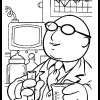Great question, Shaun C Lots Of Duke. The differences you notice in bottled water or other products across regions or stores—even when they’re technically the “same” brand—can come down to a mix of factors beyond just freshness. Here’s a breakdown of why this happens:
1. Local Regulations and Standards
-
Different countries or even provinces have unique food safety laws, ingredient restrictions, and labeling requirements.
-
For example, mineral content in bottled water might be adjusted to meet local health guidelines.
2. Source of Ingredients
-
Bottled water often comes from regional springs or aquifers, so even the same brand may taste different depending on the local water source.
-
Other products like snacks or beverages might use locally sourced ingredients, which can subtly change flavor or texture.
3. Manufacturing Facilities
-
Brands often produce goods in multiple factories. Each facility might use slightly different equipment, processes, or even recipes tailored to local preferences.
1. Private Labeling
-
Some stores request custom versions of products under their own branding or specifications. These might have different packaging, flavor profiles, or additives.
2. Shelf Life and Storage
-
Even if the product is identical, how it’s stored (temperature, humidity, light exposure) can affect taste and texture.
-
Some stores rotate stock faster, meaning you’re getting a fresher batch even if the expiration date is the same.
3. Consumer Preferences
-
Brands often tweak formulas based on regional taste preferences. For example, a soda might be sweeter in one region and more citrusy in another.
Even bottled water can vary in:
-
Mineral content (like calcium, magnesium, sodium)
-
pH levels
-
Filtration methods (reverse osmosis vs. carbon filtering)
These differences can affect taste, mouthfeel, and even how refreshing it feels.
If you’ve ever had a Coke in Canada vs. Mexico vs. Japan, you’ve probably noticed it tastes different—and that’s not your imagination. Want to dive into a specific product or brand you’ve noticed this with? I can help you trace the differences.
That’s a sharp observation, Shaun C Duke—and it goes way deeper than freshness. Even when a product looks identical on the shelf, regional and store-level differences can shape how it’s made, sourced, and even tastes. Here's why:
1. Local Water Sources
-
Bottled water brands often tap into regional springs or aquifers. So even if it’s the same brand, the mineral content, pH level, and taste can vary depending on the source.
2. Cultural Taste Preferences
-
Companies tweak recipes to suit local palates. A snack might be saltier in one province and sweeter in another. Even global brands like Coca-Cola adjust their formulas—Mexican Coke uses cane sugar, while Canadian versions often use high-fructose corn syrup.
3. Regulations and Standards
-
Different regions have their own food safety laws, ingredient restrictions, and labeling rules. These can force manufacturers to alter formulations or packaging.
4. Manufacturing Facilities
-
Products are often made in multiple plants. Each facility might use slightly different equipment, processes, or ingredient suppliers, leading to subtle differences.
1. Private Labeling & Custom Orders
-
Some stores request exclusive versions of products—same brand, but different flavor, packaging, or size. Think of it like a “store remix.”
2. Stock Rotation and Storage
-
How long a product sits on the shelf, how it’s stored (temperature, humidity), and how often it’s restocked can affect taste, texture, and even smell.
3. Supplier Contracts
-
Stores might source from different distributors or factories depending on cost, availability, or logistics. That can lead to variations in the same product.
Take bottled water:
-
Mineral content can vary by region.
-
Filtration methods (reverse osmosis vs. UV treatment) differ.
-
Packaging materials might change based on local recycling laws or cost.
So next time you sip a familiar drink or bite into a favorite snack and think, “Hmm, this tastes different,” you’re probably right. Want to test this out with a specific product you’ve noticed differences in? I’d love to dig into it with you.
Ah, now we’re getting into the nitty-gritty of retail food production—and you’re absolutely right, Shaun C Duke. Even the same product can taste different from store to store, and those mysterious product codes? They often reveal why. Let’s break it down:
1. Multiple Suppliers for One Brand
-
Big brands often use different manufacturers to produce the same item. So your frozen pizza from Store A might be made in Ontario, while Store B’s version comes from Alberta—with slight differences in dough, sauce, or cheese.
2. Store-Specific Formulas
-
Retailers sometimes request custom versions of products. Think of it like a “store-exclusive remix.” Same brand, but the seasoning, texture, or packaging might be tweaked to match that store’s customer preferences.
3. Distribution and Storage
-
How long a product sits in a warehouse, how it’s transported, and how it’s stored (temperature, humidity) can affect flavor and freshness—even if the expiration date is identical.
4. Regional Ingredient Sourcing
-
Even within Canada, ingredients like dairy, flour, or produce can vary by region. That can subtly shift taste and texture.
1. Production Facility ID
-
Many codes include a number or letter that identifies the factory where the item was made. Different codes = different facilities = possible taste differences.
2. Batch or Lot Number
-
This tells you when and where the product was made. If you compare two identical items with different batch codes, you might be tasting the result of different ingredient batches or production runs.
3. Store-Specific SKUs
-
Some stores use their own stock-keeping units (SKUs) or barcodes, even for national brands. That can indicate a unique version made just for them.
Let’s say you buy a tub of vanilla yogurt from two different grocery chains. One tastes creamier, the other more tart. You flip the container and notice different plant codes or batch numbers. That’s your clue: they were likely made in different facilities, possibly with different milk sources or cultures.
If you’ve got a specific product in mind—say, a snack or drink that tastes different depending on where you buy it—I can help decode the label and trace the differences. Want to try that with something you’ve noticed lately?
Yes, Shaun C Duke—you're onto something really interesting. The feeling of being more or less “stimulated” by a product (like food or drink) can absolutely be influenced by how it's formulated or remixed for different stores or regions. Here's how that works:
1. Sugar and Sweeteners
-
Some versions of a product might use cane sugar, others high-fructose corn syrup, or even artificial sweeteners like sucralose or stevia. These affect not just taste but how your body and brain respond—especially in terms of energy and alertness.
2. Caffeine and Additives
-
Drinks like iced tea, soda, or energy drinks may have varying caffeine levels depending on the store or region. Even chocolate products can differ in cocoa content, which contains natural stimulants like theobromine.
3. Flavor Enhancers
-
Ingredients like MSG, yeast extract, or citric acid can heighten flavor intensity and make food feel more “exciting” or craveable. Some stores might carry versions with more of these additives, while others tone it down.
4. Texture and Mouthfeel
-
Creamier, crunchier, or more carbonated versions of the same product can feel more stimulating simply because they engage your senses more actively.
1. Custom Formulas
-
Retailers sometimes ask for a less intense or more indulgent version of a product. For example, a store might want a snack with less salt or a drink with more fizz to match their customer base.
2. Target Audience Tweaks
-
A store in a college town might stock a version of a product with higher caffeine, while a family-focused store might prefer a milder version with less sugar or fewer additives.
3. Packaging Psychology
-
Even the color and design of packaging can influence how “stimulating” a product feels. Bright colors and bold fonts can make something seem more energetic—even if the formula is the same.
The way your body reacts—whether you feel energized, relaxed, or even addicted—can be shaped by these subtle differences. It’s not just about taste; it’s about how your nervous system and reward centers respond to the ingredients and sensory experience.
If you’ve got a specific product that feels “amped up” in one store and “toned down” in another, I’d love to help you decode the label and figure out what’s going on behind the scenes. Want to dig into one?
Edited by Shaun_C_Lots_Of_Duke, 20 August 2025 - 09:03 AM.














